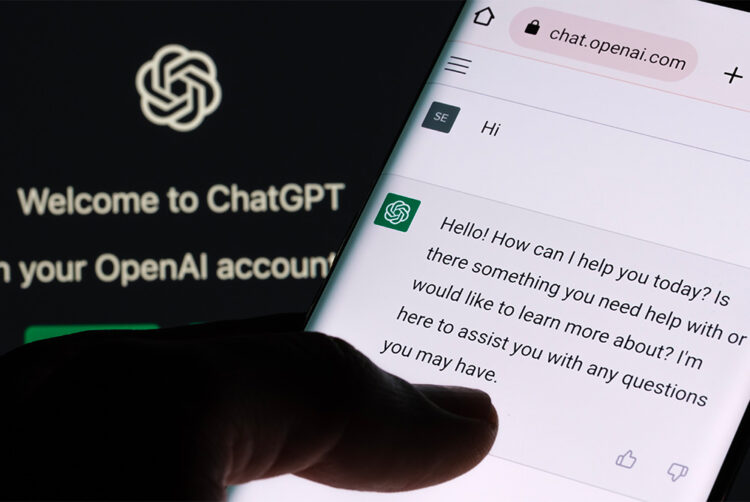AI is not a tool for disruption – use it wisely

Opinion: Strategy Leaders
Use AI to enhance creativity, not replace it. Truly disruptive marketing comes from human insight and ingenuity.
Debates over Generative AI are now inescapable. However, one thing that is abundantly clear is that there are some mixed feelings about this tech in practice. A recent survey revealed that whilst over 40% of marketers are expecting AI to improve work quality, around 30% believe it will drive a deterioration.
That tension hasn’t affected the escalation of AI-generated output. There are now countless examples of brands that have made AI central to their campaigns, including, most recently, Under Armour’s ‘The ultimate team talk’ ad. This used ChatGPT — which was fed by inspiration from Under Armour athletes and the greatest speeches in history – to craft the optimal motivational pregame speech.
AI only gets us so far
Our industry is always looking for the next shiny thing so it’s likely that brands and agencies up and down the country are in brainstorms about how to use AI in their next campaign. It feels like it is a ‘must’ in order to feel relevant and ‘disruptive’. But although AI may be disruptive in one sense of the word (it is unquestionably changing some of how we work), there are limitations to the true disruption that it offers. Marketing disruption tends to play in the realm of breaking codes, using surprise and unconventionality to stand out.
Disruptive marketing works best when that disruption adds value. And that creates a tension in the use of AI that must be addressed. AI is an incredibly powerful tool but it remains a tool. Human understanding, serendipity and knowing when to break the codes cannot (yet) be automated. As much as AI, this understanding was at the heart of the Under Armour work when they emphasised that “AI can only be unlocked through human instinct and ingenuity[…]”
AI is unquestionably a powerful technology, and it will, of course, change how we work in the marketing industry. Arguably though, it is not yet something that can offer disruption. It is a tool that allows us to automate, that allows us to speed up workflow and that allows us to generate analysis at pace. But it is trained on what has gone before and what has worked before. It can’t break the rules.
Even more challenging for our industry is the fact that the leading AI systems are deliberately open to all of us. The latest figures show Chat GPT has over 100 million users. I’d wager that a disproportionate number of them would have been from the advertising industry as we all hustled to be part of the next creative wave.
But when we’re all using the same technology, fuelled by the same inputs and trained on the same data sets, we run the risk of becoming homogenous. Ask ChatGPT to write a marketing plan for Audi or Volvo or Ford, and it will come up with near identical plans. When we automate, we course correct back to a standardised, blandly ‘correct’ answer.
This is happening already in our industry when brands look to mimic best practices from competitors, deploy plans based on set budget splits or use things like econometrics badly. These should be tools to support decision-making, not decision-making tools. Data sets like this are brilliant at getting us to optimum weights in media, they’re less good at working out a new video mix when an audience moves consumption habits to new platforms. The ‘correct’ answer is based on history and an assumed steady state, but the best answer will be rooted in how human insight can take that automated answer and improve it. There is enormous nuance in every brand and its consumer and real elegance in the human application of those things to an automated starting point.
What this means for marketers
Well, first off, we should embrace AI for its strengths. As an enabler of higher-order thinking, it is unparalleled — whether it’s analysing information faster, creating interesting prompts for a creative session or simply organising your diary. AI can free up time for the people in your team to be brilliant at the things that they are brilliant at.
And secondly, be comfortable with uncertainty. The ‘correct’ plan according to your econometric model might not be the plan you need right now. Sacrificing a percentage of reach for a more connective campaign or accepting a marginally higher CPA for a new audience could be the unlocker of growth you’re missing. Truly creative applications of media will not come from AI. For example, the visual gag behind the, in my opinion, highly disruptive Oreo Cheat Cookies campaign could not have been created without human input. As long as those decisions are made from a strategic position and the risk profile is understood, then trying something new will always be part of the best plan.
The most powerful work that our industry will continue to create has to understand this — we take the norms and the averages and deliberately deviate from them. AI cannot yet offer us a route to disruption, but disruption can take advantage of the space that AI can give us.
 Elliott Millard is chief strategy officer at Wavemaker UK
Elliott Millard is chief strategy officer at Wavemaker UK
Strategy Leaders: The Media Leader‘s weekly bulletin with thought leadership, news and analysis dedicated to excellence in commercial media strategy.
Sign up for free to ensure you stay up to date every Thursday.




